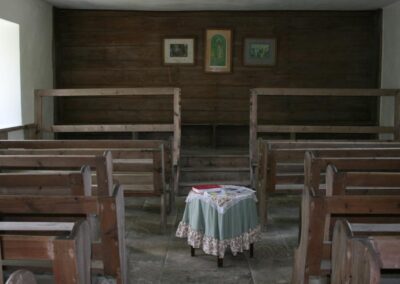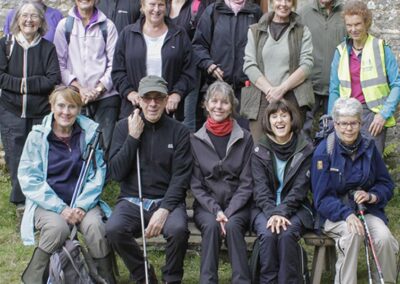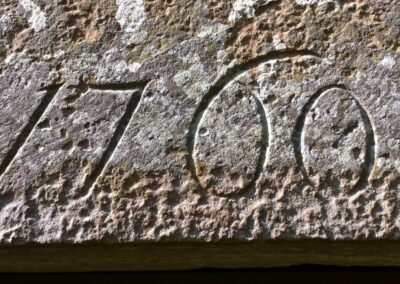Coanwood Friends' Meeting House
Coanwood Friends’ Meeting House was built in 1760 not far from Hadrian’s Wall. The almost unaltered interior is a rare and eloquent survival of historic Quaker layout and it powerfully evokes the silence of Quaker worship in this remote place, where the only sound is usually the wind and, in winter, the fast-moving burn nearby.
Directions
Grid reference: NY709590
Approximately 6 miles south of Haltwhistle and 2 miles East of Coanwood. We recommended Ordnance Survey map 86 or Google maps to locate the building. There is a noticeboard on the public road adjacent. Off-road parking for two cars on drive, but please park so as not block access for farm vehicles which use the lane at all times.
There are no toilets on site.
In the area
Coanwood is in beautiful countryside, perfect for walkers or those who want to take a driving tour of the landscape. Coanwood just south of the Northumberland National Park.
The surrounding landscape has plentiful signs of lead mining, which was a major industry in the area from the 17th to 19th centuries. The North of England Lead Mining Centre at Killhope is 18 miles away via the A689.
The Hadrian’s Wall World Heritage Site is two miles from Coanwood Meeting House, and Housesteads Roman Fort is 11 miles away.
The South Tynedale Railway, with its vintage steam and diesel locomotives, passes through Haltwhistle which is just 5 miles from Coanwood.
Address
Off the unclassified road from Coanwood to Garbutt Hill
beside Burn House Farm 3 miles due south of Haltwhistle
Nr. Haltwhistle, Northumberland
NE49 0PU
United Kingdom
The Meeting House is usually left unlocked during daylight hours.
Coanwood Friends Meeting House, built in 1760, stands in a beautiful upland valley, south of Hadrian’s Wall. Several 18th-century meeting houses survive in Cumbria but only Coanwood has been spared major alteration or conversion.
The stone-flagged interior is a rare survival of historic Quaker layout. The space is divided in two by a panelled wooden screen with top hinged shutters. The larger room is the main meeting room with seven rows of benches and two raised Elders’ benches on a narrow dais facing them.
In the burial ground are typically simple Quaker headstones with round tops and only the initials of those buried there and the date of their death in the Julian calendar, which many Quakers and nonconformists adhered to when England adopted the Gregorian calendar in 1752.
“There was often a further smaller room, under the loft or adjacent to the main room, which was regarded as the ‘womens’ meeting’; not that women had separate meeting, for Quakerism was remarkable for its attempt at gender equality in all things. In the earlier meeting houses these rooms are often separated off by removable screen of shutters.”
~ David Brett, The Plain Style, Cambridge, 2004
The meeting house was repaired and conserved using traditional methods to ensure that the historical integrity of the building remained.
Ensuring that the building can withstand the local weather is always a challenge. We have recently completed work to repair the mortar on the west facing wall; a grant from the Georgian Group’s Cleary Fund made this possible. We are now raising funds to enable us to repair the remaining facades.
Our keyholders generally leave the meeting house unlocked during daylight hours, to welcome those who wish to see inside.
There is no endowment for Coanwood and though costs for such a building are relatively modest, minor repairs are regularly needed. We welcome donations and legacies from those who wish to help us hand this meeting house on to future generations in good condition. If you would like to help this building in particular please contact us to discuss ways of doing this.
Coanwood Friends’ Meeting House has been used for art installations, recitals and meetings. If you would like to find out about hiring this remote and peaceful space please do send us your enquiry using the contact form.
It offers a tranquil setting, ideal to stop and reflect or to enjoy lunch on warmer days.









